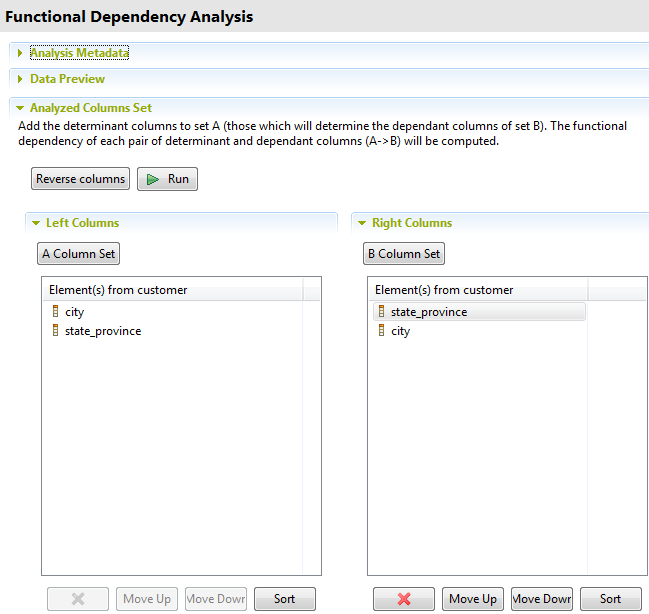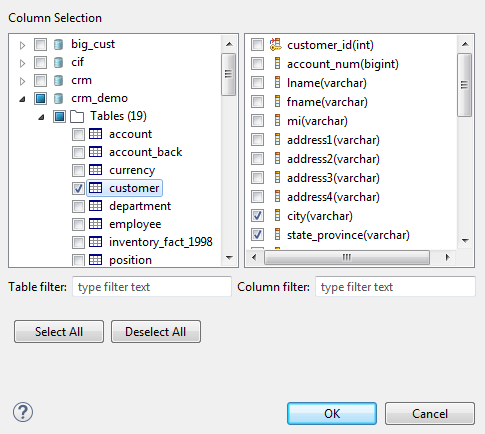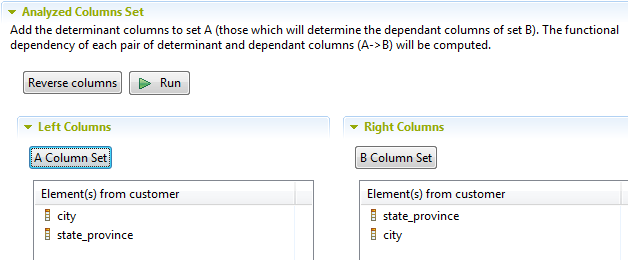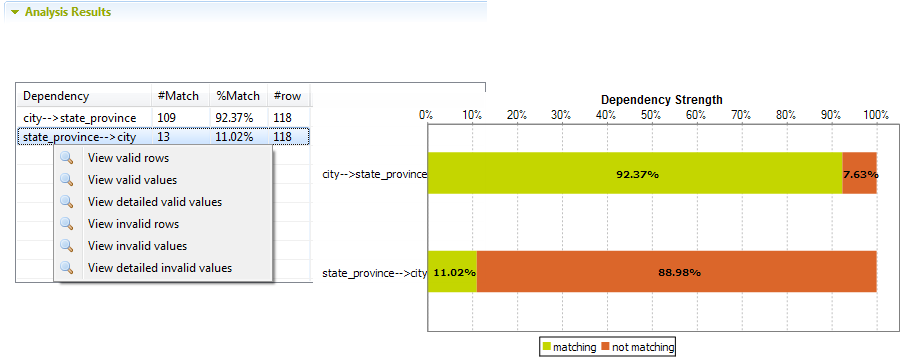Detecting anomalies in columns (Functional Dependency Analysis)
This type of analysis helps you to detect anomalies in column dependencies through defining
columns as either "determinant" or "dependent" and then analyzing values in dependent
columns against those in determinant columns. This analysis supports only database
tables.
About this task
This type of analysis detects to what extent a value in a determinant column functionally determines another value in a dependent column.
This can help you identify problems in your data, such as values that are not valid. For example, if you analyze the dependency between a column that contains United States Zip Codes and a column that contains states in the United States, the same Zip Code should always have the same state. Running the functional dependency analysis on these two columns will show if there are any violations of this dependency.
Defining the analysis to detect anomalies in columns
Before you begin
At least one database connection is set in the Profiling perspective of Talend Studio.
Procedure
- In the DQ Repository tree view, expand Data Profiling.
- In the filter field, start typing functional dependency analysis, select Functional Dependency Analysis from the list and click Next.
- Enter a name.
- Optionally, enter the column analysis metadata (Purpose, Description and Author).
- Click Next.




